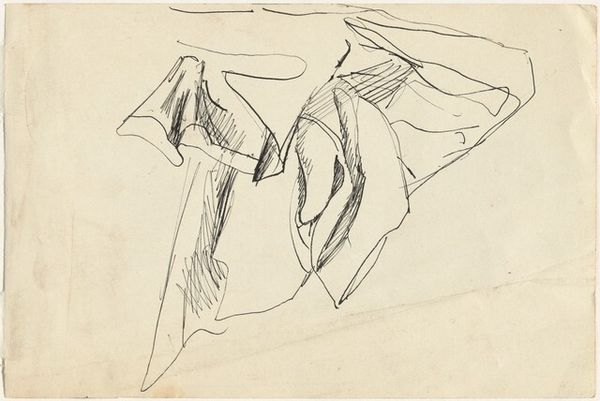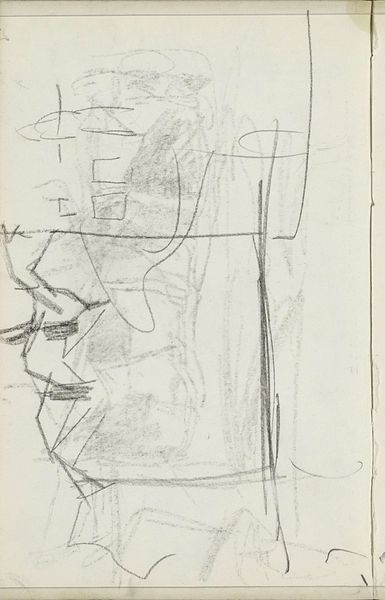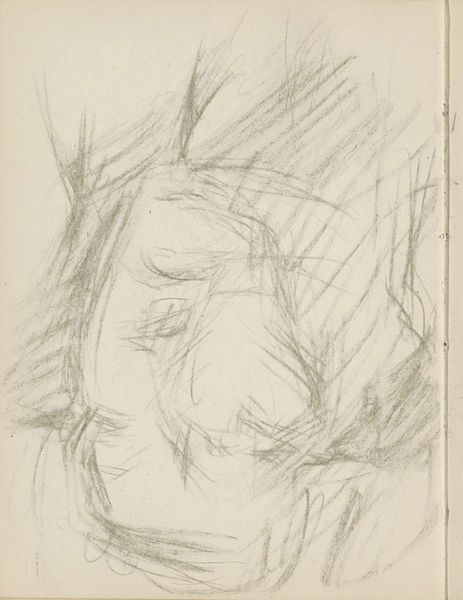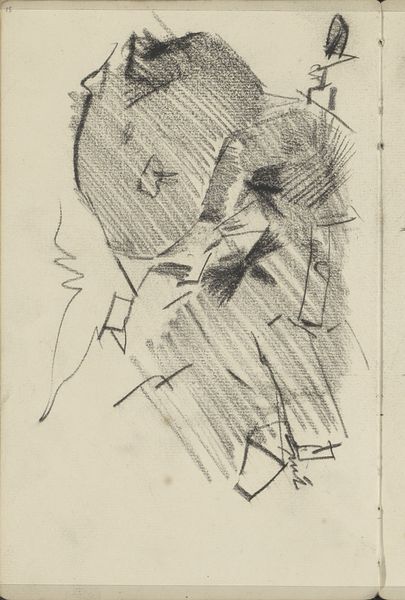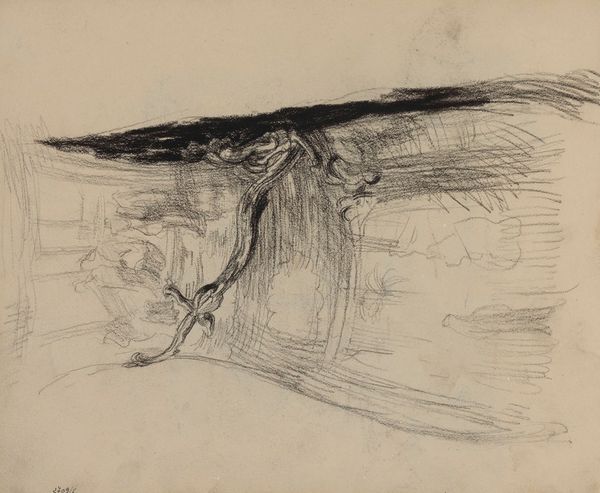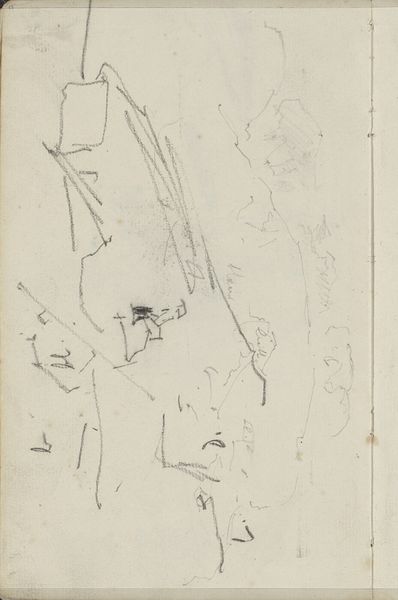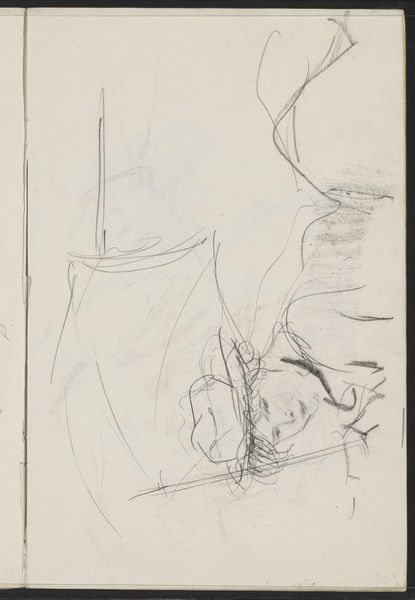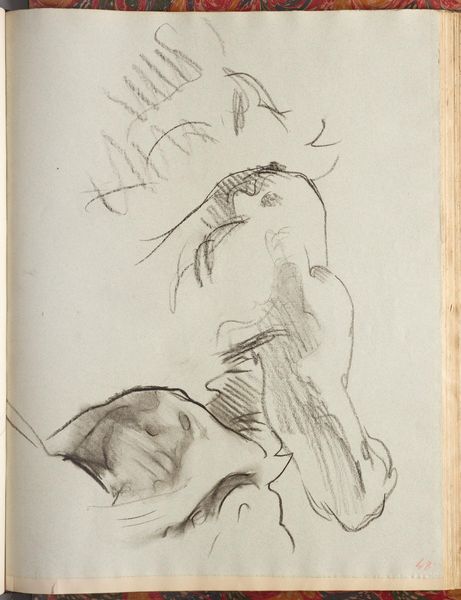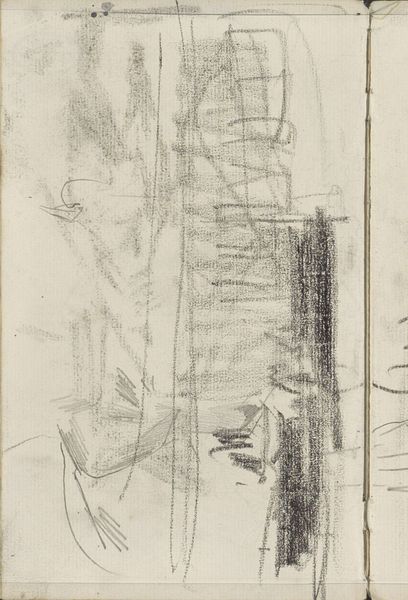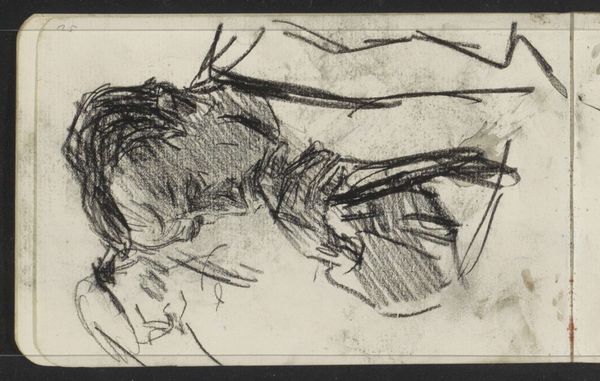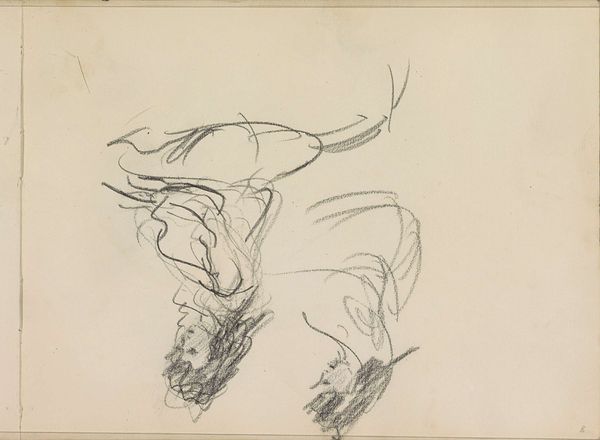
Dimensions: height 334 mm, width 268 mm
Copyright: Rijks Museum: Open Domain
Curator: Gerrit Willem Dijsselhof rendered this drawing, “Studies van een vis, met kleurnotities,” sometime between 1876 and 1924. The work, rendered in pencil and graphite on paper, resides here at the Rijksmuseum. Editor: My initial impression? It’s unfinished but quite energetic. There’s a certain fluidity in the lines, almost as if the fish is still in motion. Curator: Exactly. This aligns with the emerging Impressionist movement of the time, where capturing fleeting moments became crucial. Dijsselhof’s engagement with symbolism also appears through these 'color notes' surrounding the fish, something deeply integrated with the artistic and intellectual circles of the late 19th century. Editor: True, and from a formal perspective, look at the varied line weights. He uses very light touches to suggest the delicate texture of the scales versus bolder, more defined lines to outline the fish’s form, a way of conveying depth. Curator: Indeed. Also, it’s significant that this appears to be a page from a personal sketchbook. The spontaneity aligns with his broader artistic inclinations and his embrace of subjects from nature. Fish became a visual symbol with deeper significance than mere depiction. Editor: It does suggest immediacy. The rough quality allows us to see Dijsselhof grappling with his subject matter. These annotations, though initially cryptic, underscore how observation directly informs form. It is such raw material. Curator: And seeing such direct connection of study, meaning, and visual elements demonstrates his integration with larger artistic trends where the study and symbolic weight had importance, moving his role from artist to that of a craftsman exploring nature. Editor: The interplay between quick, impressionistic lines and his focused examination presents such balance, resulting in visual intrigue despite what one could call its lack of “finish." Curator: These sketches serve as small windows into late nineteenth century aesthetics where seeing nature through lenses of craft and ideas interplayed dynamically. Editor: Seeing Dijsselhof’s detailed approach here—both through form and written details—highlights the integral function of raw materials and the artistic process when trying to fully portray an image, concept, or memory from the past.
Comments
No comments
Be the first to comment and join the conversation on the ultimate creative platform.
